Abstract
Subjects lived in a laboratory apartment for up to 30 days, engaging in ordinary activities such as reading, sewing, and artwork. The amount of time devoted to each activity was recorded and compared with periodic verbal ratings of the amount of time devoted to the activities. The verbal and observational assessments of the time distribution were very similar, but there were some discrepancies. Based on self-reports and on observation of time actually devoted to the activities, contingencies were arranged in which time devoted to one activity produced time available for a second activity. When the contingency relation was based on behavioral assessment, predictions of time redistribution were more accurate than when the relations were based on verbal assessment. The close correspondence between observed distributions of time and verbally assessed distributions was probably due to the well-specified situation and rigorous assessment methods. Contrary to some cognitive-behavioral accounts, the contingency results suggest that verbal assessment is not necessarily preferable to observation when the two make discrepant predictions. It is suggested that verbal reports might be used more often in behavior analysis in place of lengthy or difficult observations, and attention is drawn to a personality model that parallels important components of behavior analysis.
Full text
PDF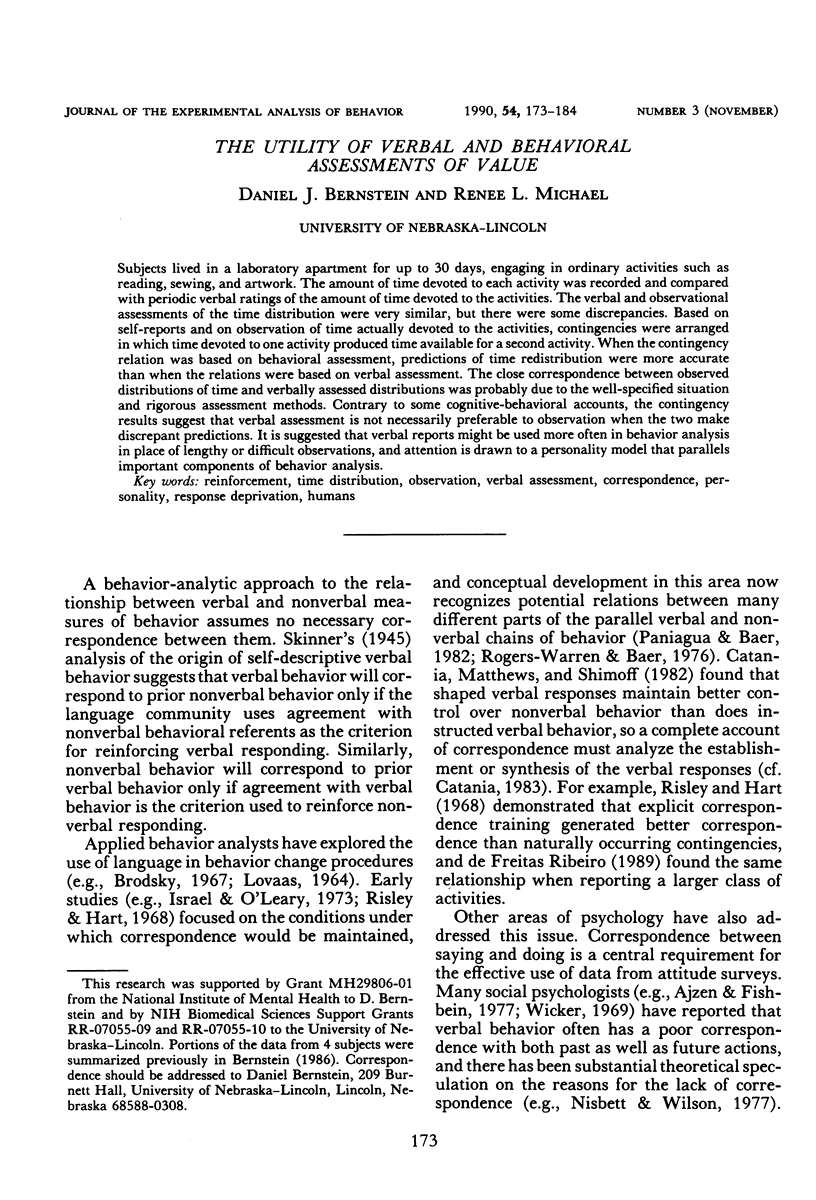
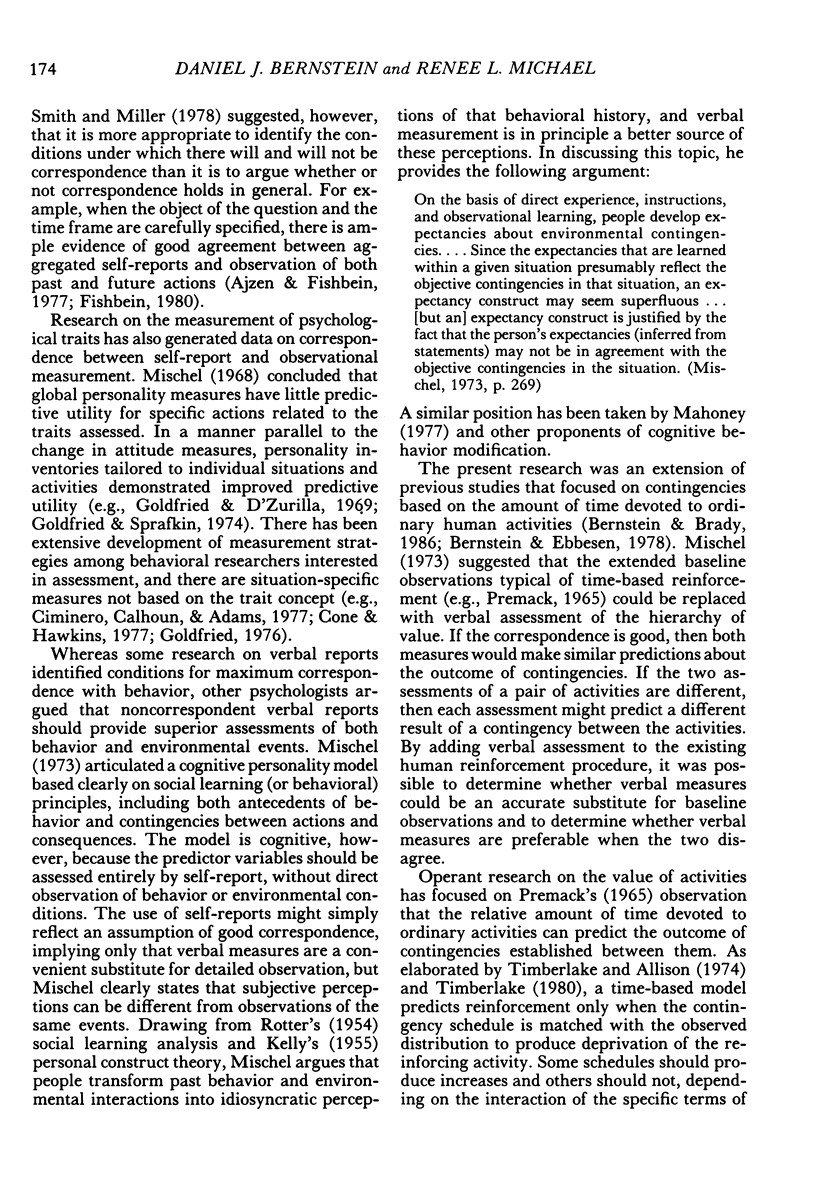

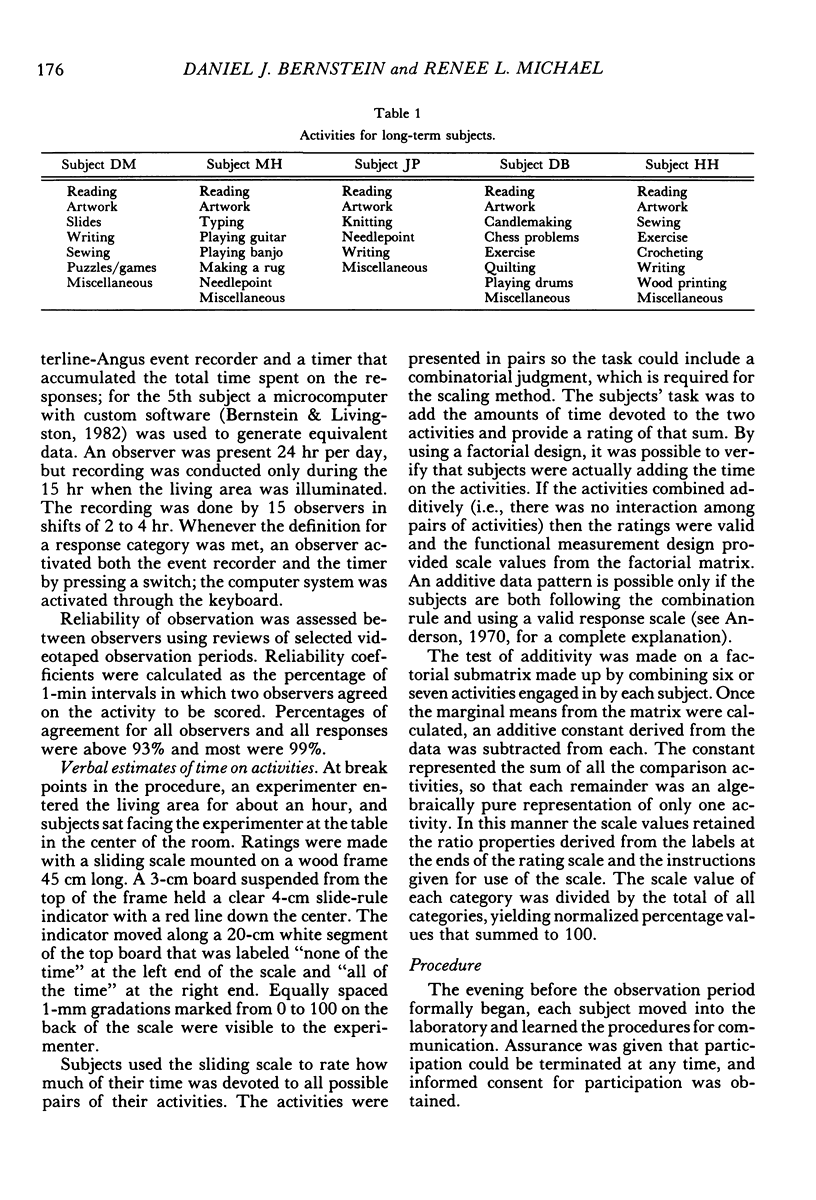
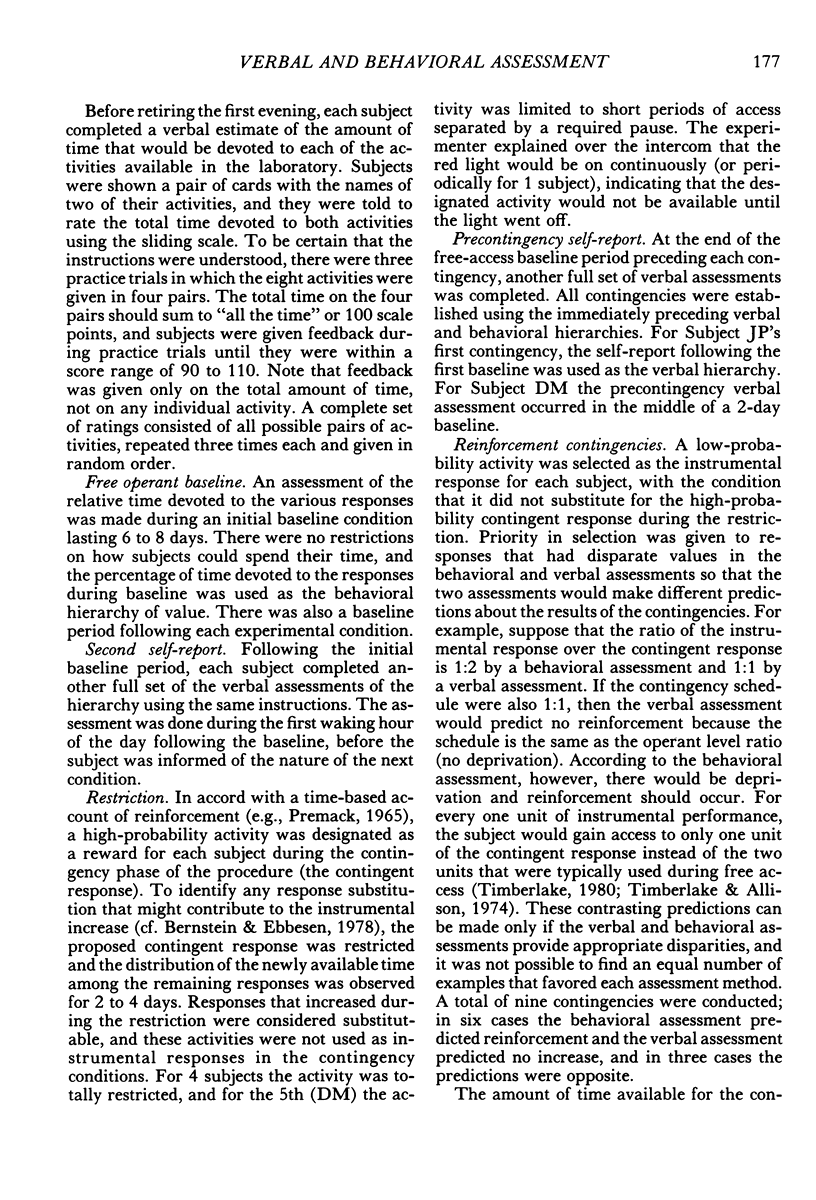
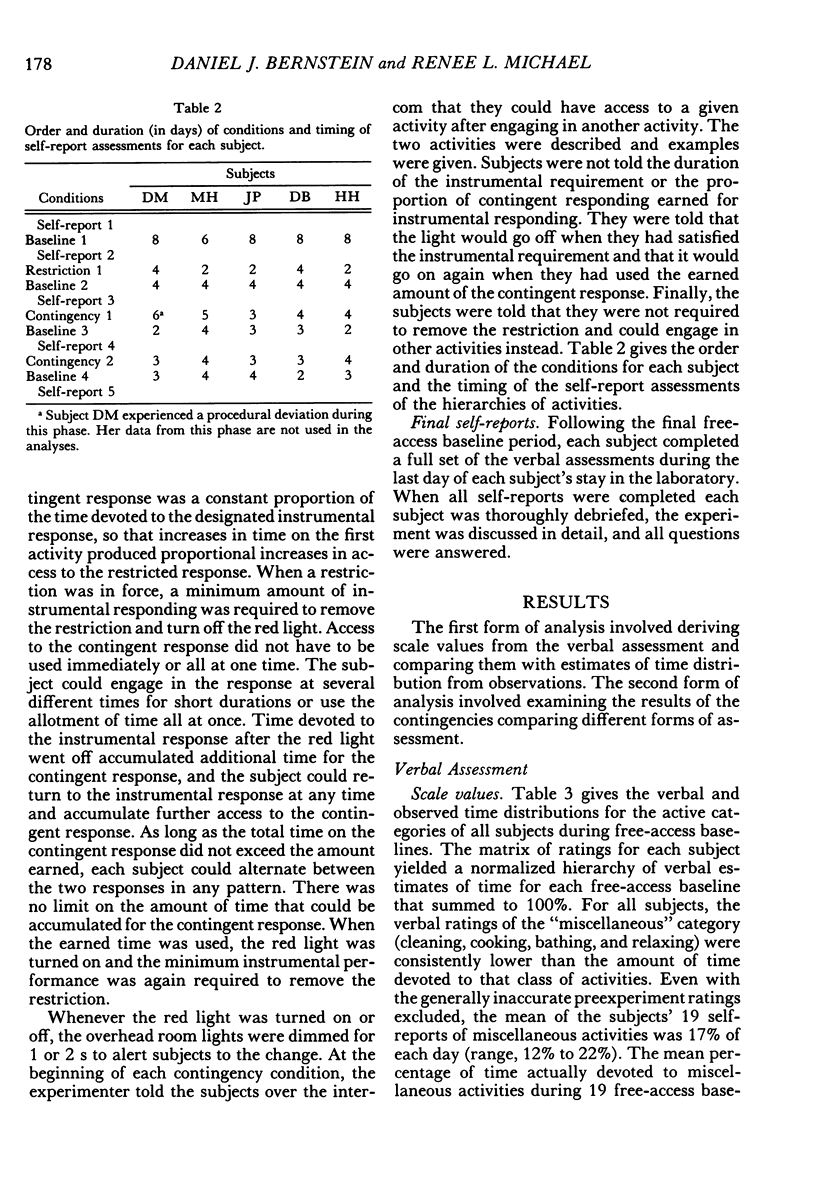
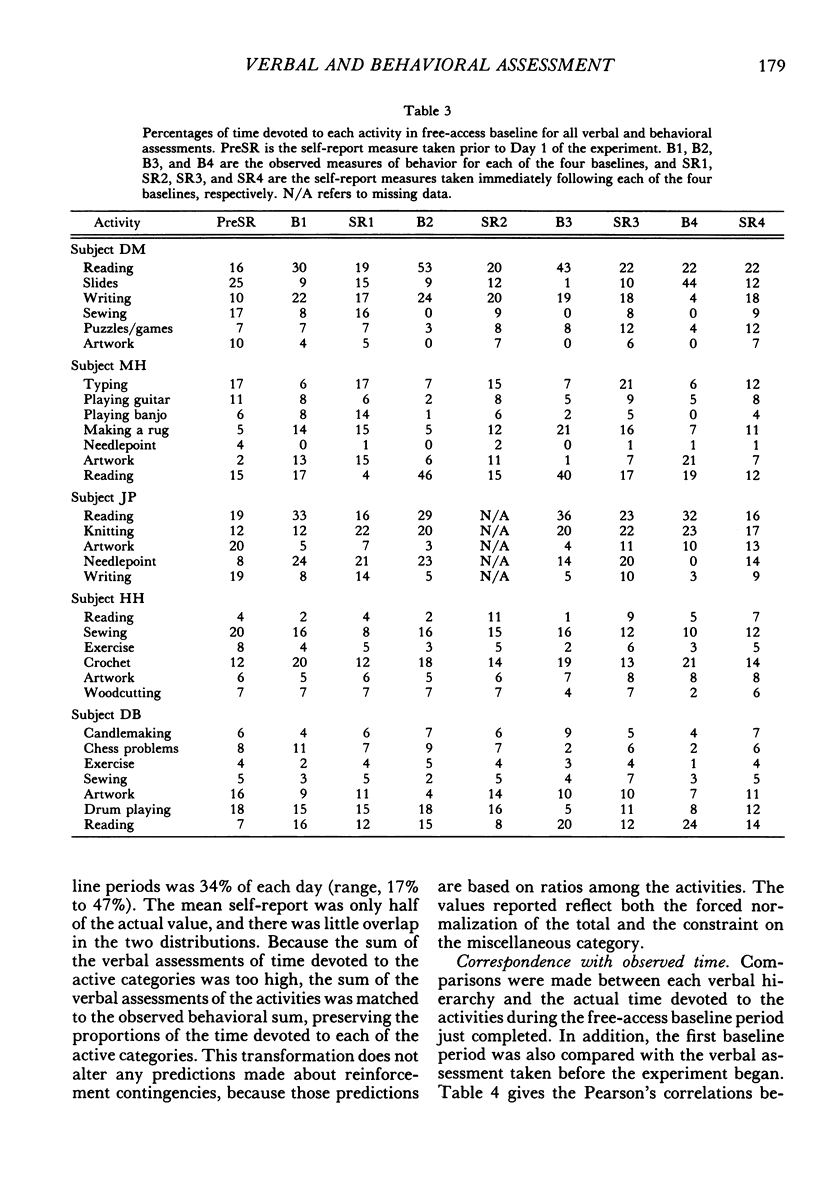
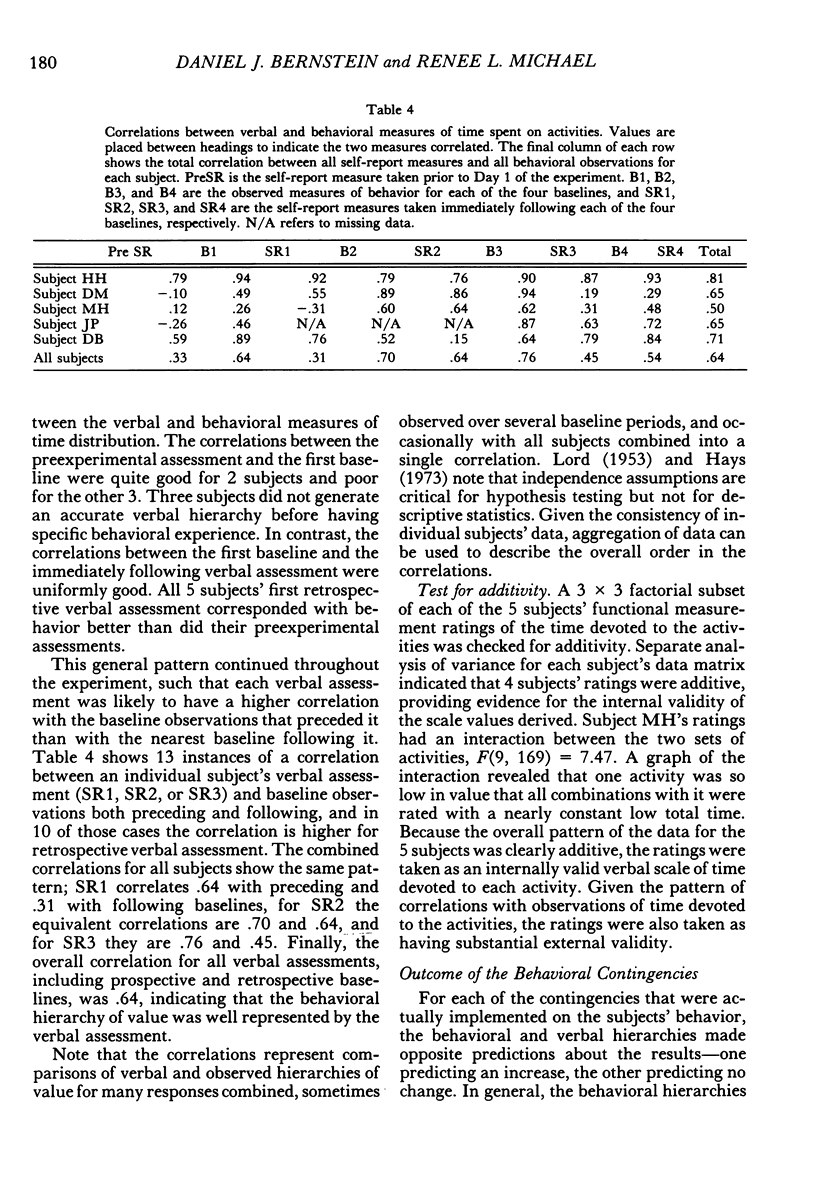
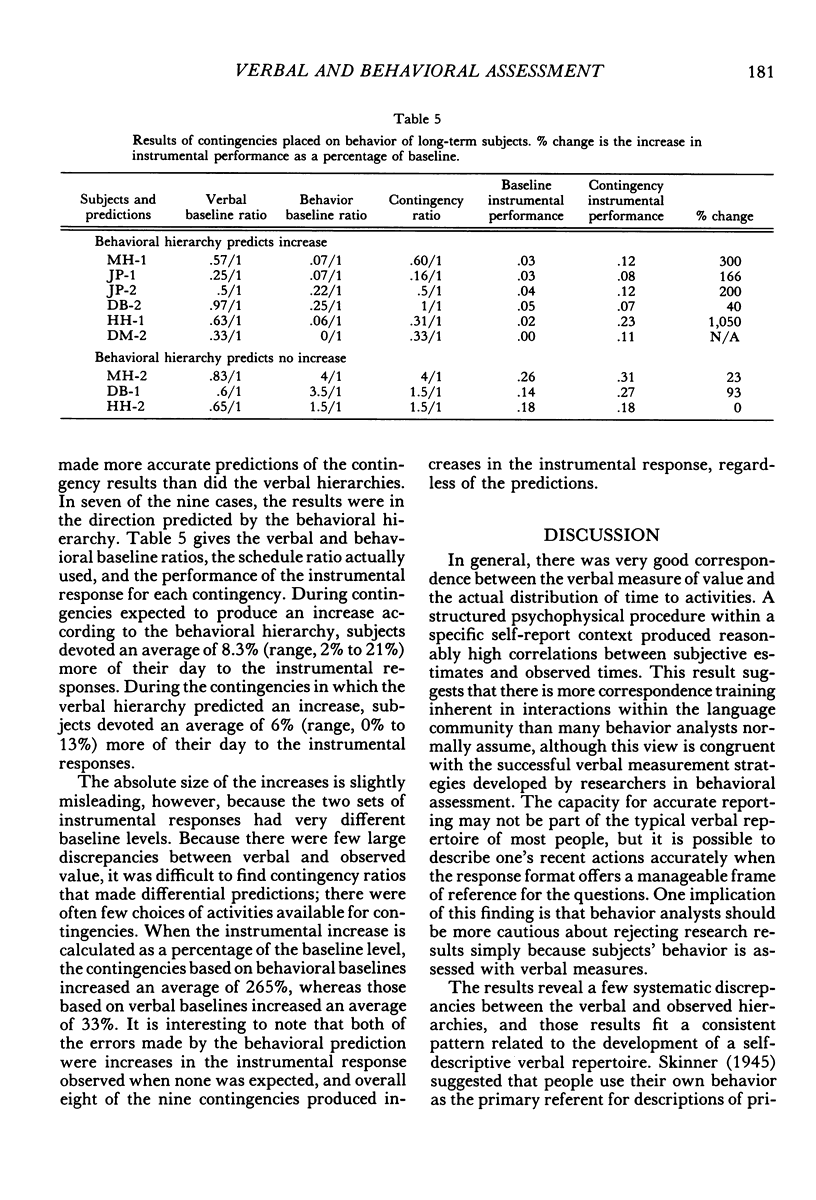
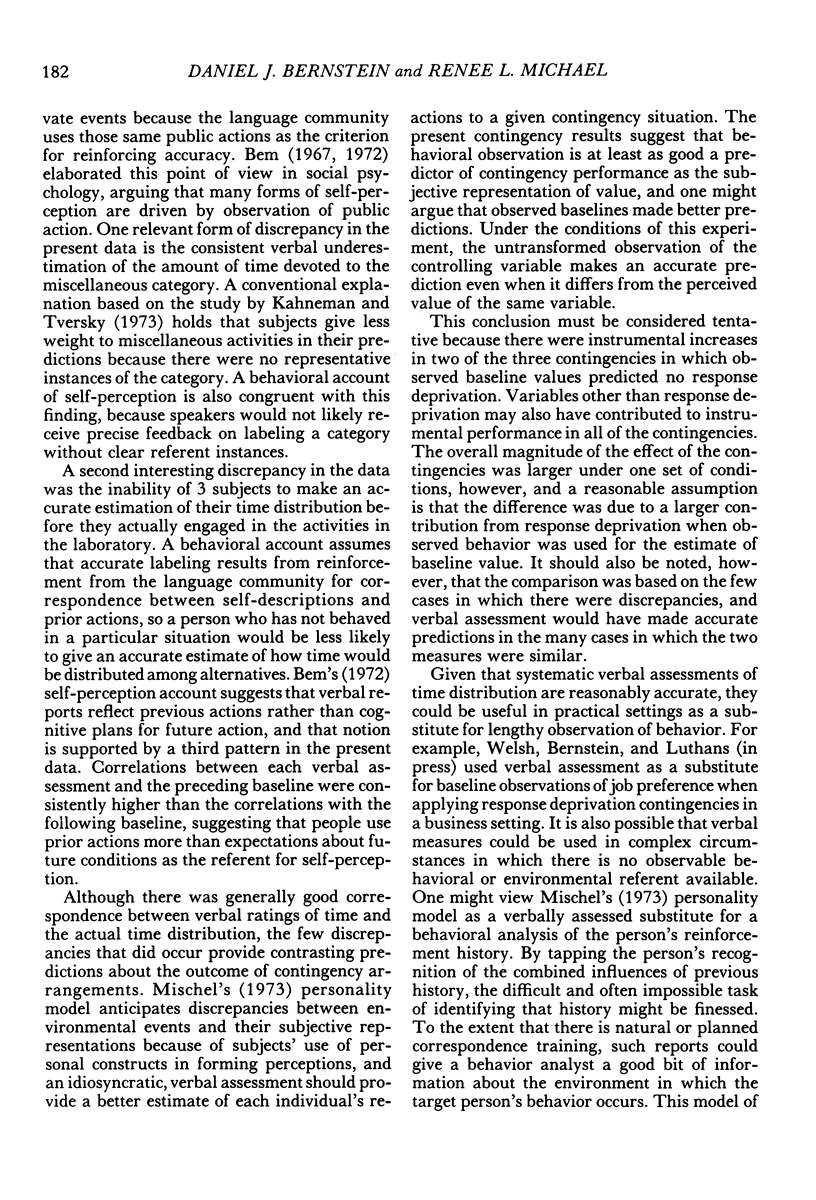
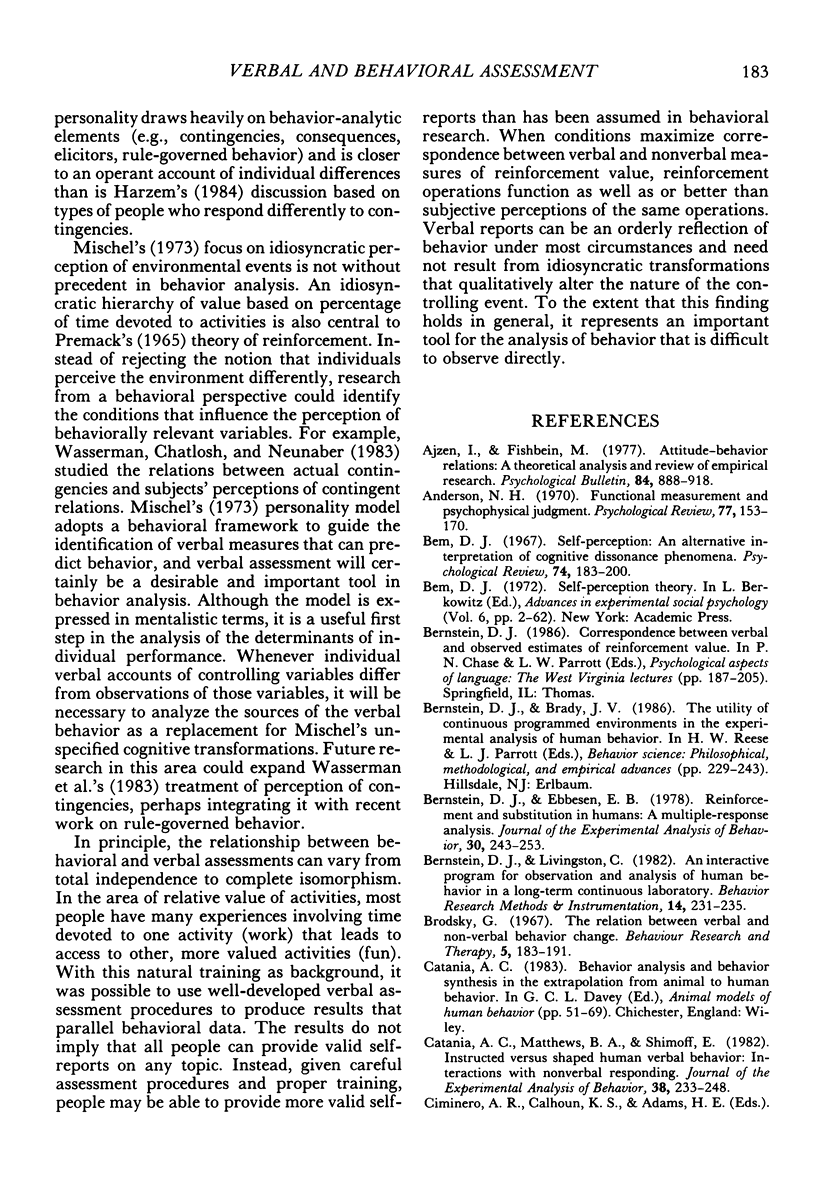
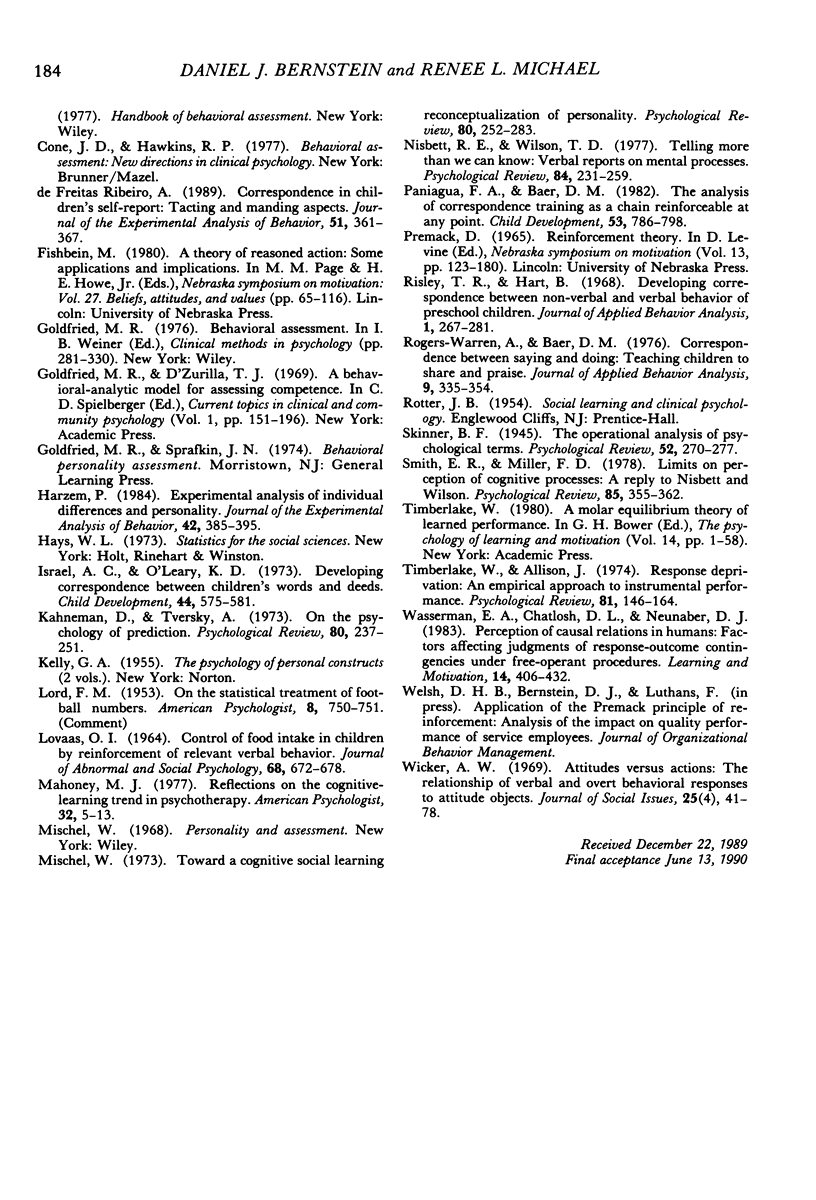
Selected References
These references are in PubMed. This may not be the complete list of references from this article.
- Anderson N. H. Functional measurement and psychophysical judgment. Psychol Rev. 1970 May;77(3):153–170. doi: 10.1037/h0029064. [DOI] [PubMed] [Google Scholar]
- Bem D. J. Self-perception: An alternative interpretation of cognitive dissonance phenomena. Psychol Rev. 1967 May;74(3):183–200. doi: 10.1037/h0024835. [DOI] [PubMed] [Google Scholar]
- Bernstein D. J., Ebbesen E. B. Reinforcement and substitution in humans: a multiple-response analysis. J Exp Anal Behav. 1978 Nov;30(3):243–253. doi: 10.1901/jeab.1978.30-243. [DOI] [PMC free article] [PubMed] [Google Scholar]
- Brodsky G. The relation between verbal and non-verbal behavior change. Behav Res Ther. 1967 Aug;5(3):183–191. doi: 10.1016/0005-7967(67)90033-2. [DOI] [PubMed] [Google Scholar]
- Catania A. C., Matthews B. A., Shimoff E. Instructed versus shaped human verbal behavior: Interactions with nonverbal responding. J Exp Anal Behav. 1982 Nov;38(3):233–248. doi: 10.1901/jeab.1982.38-233. [DOI] [PMC free article] [PubMed] [Google Scholar]
- De Freitas Ribeiro A. Correspondence in children's self-report: Tacting and manding aspects. J Exp Anal Behav. 1989 May;51(3):361–367. doi: 10.1901/jeab.1989.51-361. [DOI] [PMC free article] [PubMed] [Google Scholar]
- Fishbein M. A theory of reasoned action: some applications and implications. Nebr Symp Motiv. 1980;27:65–116. [PubMed] [Google Scholar]
- Harzem P. Experimental analysis of individual differences and personality. J Exp Anal Behav. 1984 Nov;42(3):385–395. doi: 10.1901/jeab.1984.42-385. [DOI] [PMC free article] [PubMed] [Google Scholar]
- LOVAAS O. I. CONTROL OF FOOD INTAKE IN CHILDREN BY REINFORCEMENT OF RELEVANT VERBAL BEHAVIOR. J Abnorm Psychol. 1964 Jun;68:672–678. doi: 10.1037/h0047612. [DOI] [PubMed] [Google Scholar]
- Mahoney M. J. Reflections on the cognitive--learning trend in psychotherapy. Am Psychol. 1977 Jan;32(1):5–13. doi: 10.1037//0003-066x.32.1.5. [DOI] [PubMed] [Google Scholar]
- Mischel W. Toward a cognitive social learning reconceptualization of personality. Psychol Rev. 1973 Jul;80(4):252–283. doi: 10.1037/h0035002. [DOI] [PubMed] [Google Scholar]
- Risley T. R., Hart B. Developing correspondence between the non-verbal and verbal behavior of preschool children. J Appl Behav Anal. 1968 Winter;1(4):267–281. doi: 10.1901/jaba.1968.1-267. [DOI] [PMC free article] [PubMed] [Google Scholar]
- Rogers-Warren A., Baer D. M. Correspondence between saying and doing: teaching children to share and praise. J Appl Behav Anal. 1976 Fall;9(3):335–354. doi: 10.1901/jaba.1976.9-335. [DOI] [PMC free article] [PubMed] [Google Scholar]


